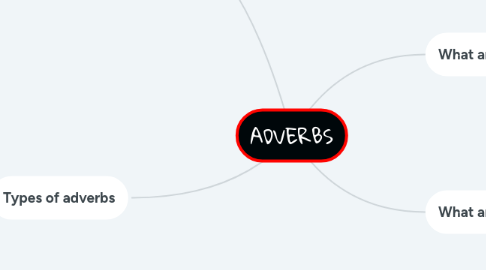ADVERBS
создатель Jean Alejandro


1. How to convert an adjective into an adverb?
1.1. You can turn an adjective into an adverb by following a few rules, such as adding "ly" to the end of an adjective or changing the last letter of the adjective to an "i" and then adding "ly". Add "ly" to the end of most adjectives to turn them into an adverb
2. Types of adverbs
2.1. De tiempo (adverbs of time)
2.1.1. now early late soon already tomorrow.
2.1.1.1. You have to come tomorrow. ...
2.2. De probabilidad (adverbs of probability)
2.2.1. definitely doubtless maybe perhaps probably
2.2.1.1. Maybe it won't rain.
2.3. De afirmación (adverbs of affirmation)
2.3.1. certainly clearly indeed naturally obviously
2.3.1.1. Of course i will go to your birthday party
2.4. De negación (adverbs of negation)
2.4.1. -No/None -Never -Neither -Not -Not at all
2.4.1.1. I never felt so good as today.
2.5. De lugar (adverbs of place)
2.5.1. -Outside -Back -Here -Upstairs -Inside
2.5.1.1. She took the child outside.
